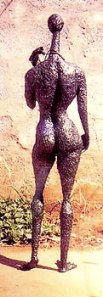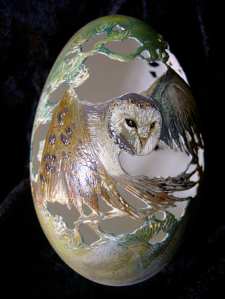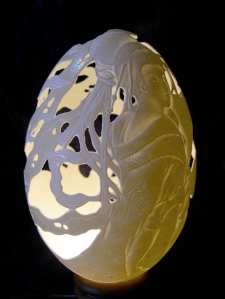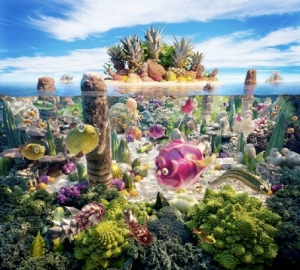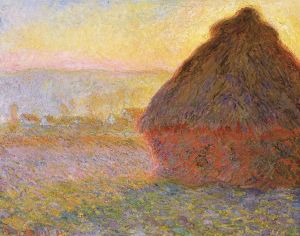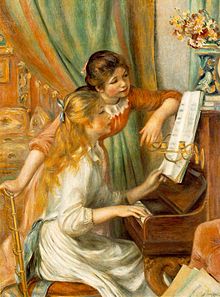
The Birth of Venus is a beautiful peice of art created by Sandro Botticelli in 1485. Botticelli was a rising artist during the Italian Renaissance. This work seems to be inspired by Poliziano’s poem of the Giostra .
…a young woman with nonhuman countenance, is carried on a conch shell, wafted to shore byplayful zephyrs; and it seems that heaven re-joices in her birth.
the Hours treading the beach in white garments, the
breeze curling their loosened and flowing hair;
their faces not one, not different, as befits sisters.
You could swear that the goddess had emerged
from the waves, pressing her hair with her right hand,
covering with the other her sweet mound of flesh; (1)

The zephyrs blowing Venus to shore.
Lorenzo de Medici was very swift to support this artist, and in fact Botticelli’s Birth of Venus was in the Medici villa in Castillo.
Botticelli seems to vary is style of art over his career as an artist. The Birth of Venus is one of his more flat paintings, with little linear perspective; compare it to his Costello Annunciation (1489):

I would not have recognized this painting as Botticelli’s. The depth of the the painting is incredible and the vibrant colors are so different from his Birth of Venus.
Bringing the Focus back to the Birth of Venus. Botticelli was Catholic, although this painting shows very pagan imagery. It was only due to the Medici’s power that this painting avoided distruction by the Catholic Church like some other of Botticelli’s pagan themed paintings.
Botticelli’s works also show a hint of mannerism with the nude figures and awkward body positions and proportions. Note Venus’ tilt to her sholder and long neck. It is suggested that Venus was modeled after the Venus de Medici marble statue.
I find the Birth of Venus an incredibly beautiful work of art. There is a lot of motion within the painting from the billowing cloak being handed to her, to her hair. Her hair is what attracts me most to this painting. The golden length and the way it blows in the breeze, I feel like I am actually in the painting. Her serene expression is one of love and understanding.
Resources
1) taken from http://employees.oneonta.edu/farberas/ARTH/arth213/botticelli_poliziano_birth_venus.htm)
http://www.arthistoryguide.com/The_Birth_of_Venus.aspx
http://www.botticellibirthofvenus.com/

